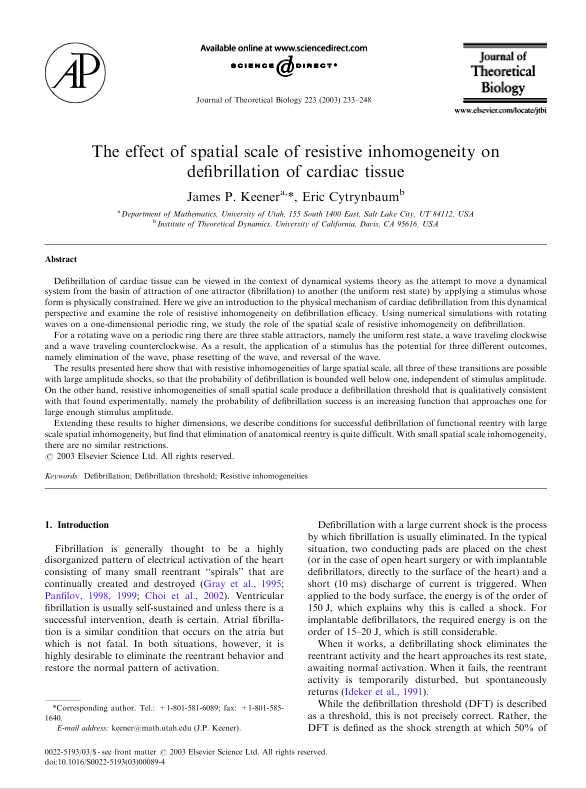Publications
| Abstract | Defibrillation of cardiac tissue can be viewed in the context of dynamical systems theory as the attempt to move a dynamical system from the basin of attraction of one attractor (fibrillation) to another (the uniform rest state) by applying a stimulus whose form is physically constrained. Here we give an introduction to the physical mechanism of cardiac defibrillation from this dynamical perspective and examine the role of resistive inhomogeneity on defibrillation efficacy. Using numerical simulations with rotating waves on a one-dimensional periodic ring, we study the role of the spatial scale of resistive inhomogeneity on defibrillation. For a rotating wave on a periodic ring there are three stable attractors, namely the uniform rest state, a wave traveling clockwise and a wave traveling counterclockwise. As a result, the application of a stimulus has the potential for three different outcomes, namely elimination of the wave, phase resetting of the wave, and reversal of the wave. The results presented here show that with resistive inhomogeneities of large spatial scale, all three of these transitions are possible with large amplitude shocks, so that the probability of defibrillation is bounded well below one, independent of stimulus amplitude. On the other hand, resistive inhomogeneities of small spatial scale produce a defibrillation threshold that is qualitatively consistent with that found experimentally, namely the probability of defibrillation success is an increasing function that approaches one for large enough stimulus amplitude. Extending these results to higher dimensions, we describe conditions for successful defibrillation of functional reentry with large scale spatial inhomogeneity, but find that elimination of anatomical reentry is quite difficult. With small spatial scale inhomogeneity, there are no similar restrictions. |
|---|---|
| A link to the paper |
 J Theor Biol, 223(2):233-248, 2003. |